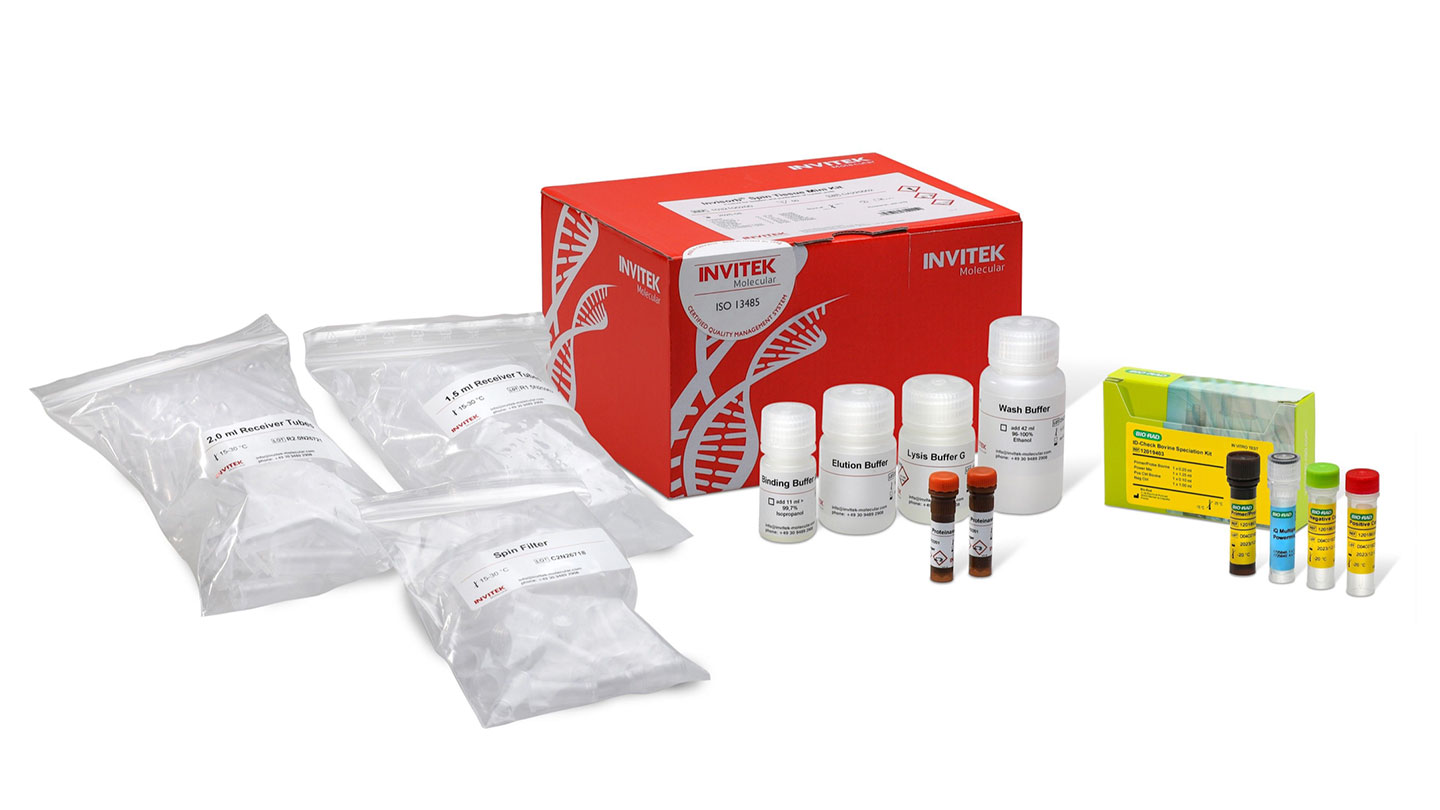
On This Page |
Introduction | Q&A | Resources | Talk with a Specialist |
THE IDENTIFICATION of meat species is important in the food industry for reasons of transparency when it comes to labelling, origins, and economic transactions. Estimates suggest that food fraud could cost the industry billions of dollars each year. With multiple cases of adulterated meat hitting the food supply, what can be done to overcome and anticipate potential fraudulent events resulting from intentional use of lower value meat or unintentional contamination?
Enter the ID-Check Speciation Solution, newly launched by Bio-Rad, providing a real-time PCR method for meat speciation, or the identification of the animal species from which the meat has originated, in food, feed and environmental samples.

Mike Clark
Mike Clark began his career in 1999 as a microbiologist with Dairy Farmers of America/Chestnut Labs, transitioning to Lab Director and Director of Business Development. Mike joined Bio-Rad in 2012 and is currently Global Marketing Manager, Molecular Food Diagnostics, developing products and strategies for PCR and ddPCR in food diagnostics. Mike serves on the AOAC Board of Directors, Research Institute Advisory Council, Cannabis Analytical Science Program Advisory Council, and multiple working groups, stakeholder panels, and programs.

Giuseppe Tosto
Giuseppe began his career in 1996 in the life science field in Serono Group as Technical Manager. With chemical knowledge and over 20 years of experience in managing sales teams and distributors in this market, he joined Bio-Rad as Account Manager Italy and his current role allows him to share his advice and experience relating to the food, feed and veterinary markets to customers in private and public laboratories.
GT: The first step is to make it clear that every company must create its own analytical internal control plan (chemical, immunological, microbiological, etc) which must follow the entire chain, from the acquisition/cultivation of the raw material to production up to arrival on the sales shelves, as in accordance with the Global Food Safety Standards defined by the British Retail Consortium (BRC) or Safe Quality Food (SQF).
This is vital to facilitate trade and allow consumers to make informed choices. Especially in industrial production, food fraud analysis plans must include methods capable of identifying fraud and its origin, whether commercial or sanitary, and I would underline how contamination during the last stages of processing would increase the production cost, the real security risk and would have a strong impact on the brand image.
Continuing the discussion, we often get questions on investigating the quality of a method and the possibility of combining it with a company’s own internal routine testing, both for simplicity and defensible results. I often get questions like “is the assay ready to use?”, “is the method repeatable and sensitive enough for religious purposes?”, or “are there multiplex assays for multiple targets?”
This last question in particular requires a complex answer. Multiplex assays like this are quite risky. For example, there must be no sequence homology between the various primers. The length of the various amplicons must be different to discriminate between them, but also fall within a certain range. And finally, the pairs of primers used must be sufficient to amplify all the loci of a gene or a region of interest, otherwise one primer can cannibalise the other and produce a false negative result.
GT: Some time ago in Italy there was a contamination of horse meat in stuffed pasta not declared on the label, and this led to quite the scandal across Europe. These could have been avoided with stringent analytical protocol and molecular tests.
GT: Bio-Rad, already an industry leader for PCR solutions for food pathogen testing, recently launched the ID-Check Solution for eight different meat species (bovine, turkey, duck, goat, chicken, horse, swine and sheep), plus an extraction kit in a ready-to-use format that is easy to use, with results in less than two hours that deliver reliable and reproducible results with high sensitivity (limit of detection (LOD) at least 0.01%) and specificity (100%). After sample preparation and optimised DNA extraction, results are ready after a 75-minute PCR run detecting species-specific mitochondrial DNA with proprietary primers and probes.
GT: The methodologies used today in species determination are mainly based on DNA and proteins/peptides and other less used techniques such as triacylglycerol. The PCR technique certainly has many advantages over an immunological ELISA test, given that the latter can suffer from issues with cross-reactivity, detection limit and given that antibody stability can be sensitive to environmental conditions such as temperature and pH.
The protein subjected to cooked temperatures can degrade or lose activity over time, compromising the reliability and reproducibility of the test. Without an internal reaction control you are blind to possible false negative results, while the Bio-Rad ID-Check Speciation Kit detects mitochondrial DNA ensuring a low LOD compared even to single copy genomic DNA targets and the possibility to determinate a high mutation rate. In addition, each reaction contains an internal amplification control.
GT: ID-Check Speciation kits are a premium quality PCR solution that provide general laboratory and research personnel with an easy and ready-to-use kit for the detection of DNA from select meat species. The kits target mitochondrial DNA in food, feed and environmental samples.
Our solution offers quality, linked to the brand, high performance, data security for all types of laboratories, including service labs, in-house testing labs, R&D labs and regulatory authorities to help trade and enable consumers to make informed choices.

For more information on Bio-Rad’s ID-Check Speciation Solution, please visit:
www.bio-rad.com/speciation
